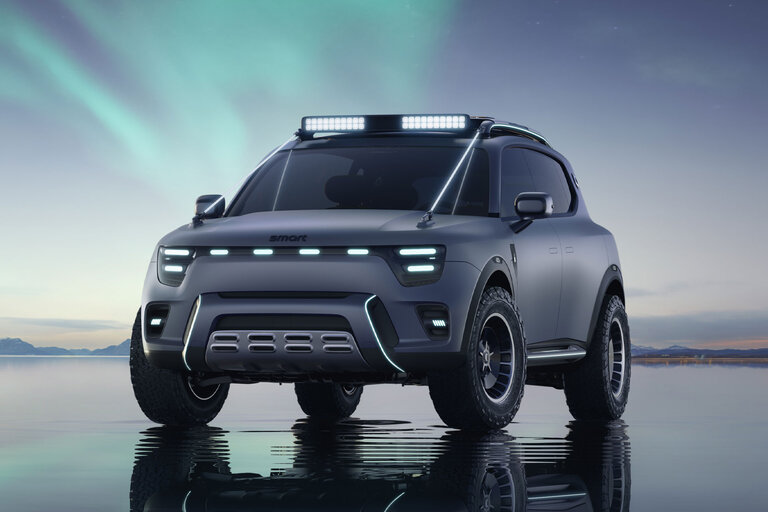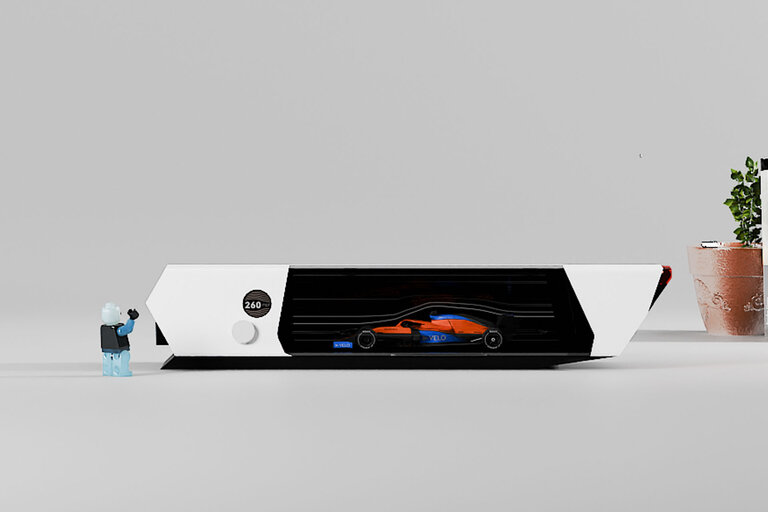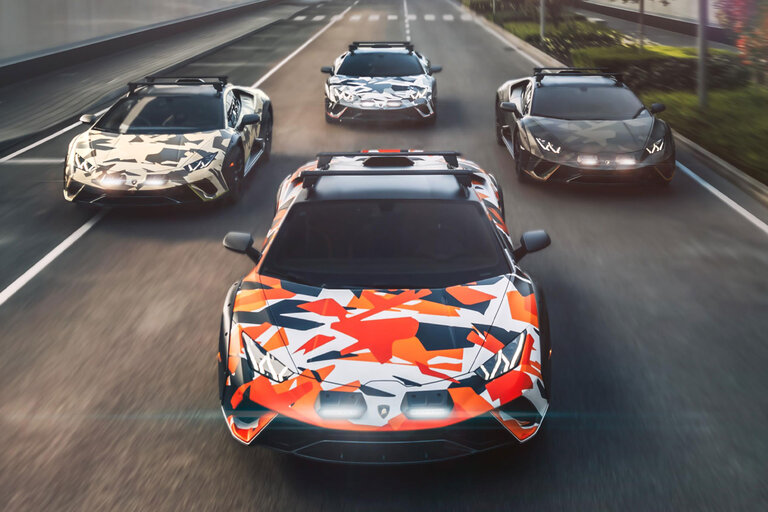
Toyota’s luxury division, Lexus, hit the market in 1990 with only two products. Both were four-door sedans. The LS400 was a flagship that gave flagships a good name. A magnificent, over-engineered, overbuilt overachiever, the rear-drive LS is a car that forced Mercedes to build better Mercedes and BMW better BMWs. In comparison, Lincolns and Cadillacs seemed like flimsy cardboard dipped in plasti-chrome.
The second car at the dawn of Lexus was the front-drive ES250. It was a fancy Camry.
Now, after a scant 29-year absence, the ES250 has been revived in the form of the 2021 Lexus ES250 AWD. Yes, the ES has always stuck around, but this is a return of the 250 model to North America. When the second-generation ES was introduced for 1992, the V-6 grew to a nominal 3.0 liters—back when trunk numbers meant something—and the name evolved into ES300. But the ES250 name doesn’t mean that the original’s 2.5-liter V-6 has returned. Nope, this is the first nonhybrid Lexus ES sold in North America with a four-cylinder engine. It also brings all-wheel drive, and you can only get that system with the four-banger.
A four-cylinder ES makes a certain amount of sense. For many ES buyers, the V-6 has always been overkill, smoother and more powerful than they can appreciate. A four-cylinder ES means slightly better fuel economy and a modest diminishment of refinement. No one drag races an ES anyhow.
The inline-four that takes up residence in the new ES250 is, no surprise, the A25A-FKS. For those who don’t speak fluent Toyota engineering—it’s an elective at Santa Barbara Community College—that means this is a 203-hp 2.5-liter four, the same one that’s standard in the 2021 Camry. It’s got variable valve timing, two cams directing four valves over every cylinder, and both port and direct fuel injection. The block and heads are both aluminum, and okay, there’s just no way to make this perfectly ordinary thing exciting.
But it is ordinary in that way that makes Toyota four-cylinder engines extraordinary. It ought to outlast you and several generations of your ancestors. And it runs good on regular gas.
All that ordinary is lashed to an eight-speed automatic transaxle, just as in the Camry. It works fine and shifts relatively quickly using paddles behind the steering wheel. The gears are spaced so that sixth gear is a direct drive (1.00:1) and eighth is a deep dive 0.67:1 overdrive. Pure Camry.
For comparison’s sake, the original ES250 back in 1990 only had 156 horsepower coming from its V-6. Meanwhile, today’s ES350, powered by a 3.5-liter V-6, gets a robust 302 horsepower delivered with silken silkiness to drivers who likely often wear silk.
Chassis-wise, all Lexus ES models are built atop the TNGA architecture that Toyota uses across so many products. There are struts holding up the nose, a multilink independent suspension in the tail. It rides fine, handles okay, and is manifestly imperturbable.
At 113.0 inches, the ES250’s wheelbase is 1.8 inches longer than a Camry’s. And it’s the same wheelbase as the third, closely related sedan in production at Toyota’s Georgetown, Kentucky, plant: the Toyota Avalon. We weren’t sure that adding AWD to the Avalon justified the mandatory demotion to four cylinders. And the product-planning logic there—more traction, less power and refinement—is even harder to understand when applied to a luxury car.
The ES250’s interior is styled along the same lines as that of the current LS model, though not as lavishly detailed. There are wood accents, big vents, and a big screen atop the dash center. Leather is perforated for comfort, the seats are shaped for regal sitting, and the instrumentation couldn’t be more straightforward. The little dials alongside the top of the instrumentation hood are kind of goofy but hardly distracting. This is among the very most comfortable interiors available, even if it’s not quite extravagant.
The F-Sport package adds some counter-color stitching detail to the innards and puts the car on big 19-inch wheels sculpted to impress. The F-Sport suspension is a bit tauter but hardly stiff. Don’t go hunting BMW Ms or Mercedes AMGs. And it is the F-Sport package that likely contributed to a 75-mph highway fuel economy of 33 mpg, 1 worse than its EPA estimate for highway travel.
Start the engine and it settles down into a quiet, if not quite super smooth, idle. There’s little character to the exhaust note. Power is just kind of there in adequate amounts for the intended buyer. Let’s just call it unambitious.
The ES250 doesn’t so much run the quarter-mile as it strolls. The time from rest to 60 mph is a low-key, low-effort, low-interest 8.1 seconds, and the full 1320 feet go by in 16.2 seconds with a trap speed of 88 mph. That’s neither quick nor fast. But hey, will the buyers notice? This is a car built for life at part throttle.
The ES350 is notably quicker. Back in 2019, when the current car was introduced, it hit 60 mph in 6.0 seconds and ran the quarter-mile in 14.6 seconds at 99 mph. That’s a lot of additional high-end thrust, and it comes from a much smoother engine.
Currently, Lexus is only offering ES250 with all-wheel drive, but it seems natural for a front-drive version to come later. Even with the extra burden of the all-wheel drive system, the four-cylinder car is rated by the EPA at 25 mpg in the city and 34 mpg on the highway. Meanwhile, the ES350 F-Sport is at 22 mpg in the city and 31 on the highway. In today’s game of squeezing out mpg, that three-mile-per-gallon edge matters.
Still, at part throttle it’s not like the ES250 AWD has any real problem moving its 3776 pounds of heft. On the skidpad, the F-Sport’s 235/40R-19 Michelin Primacy MXM4 tires generated 0.86 g. Understeer was modest, which is a word that also describes the 167-foot stopping distance from 70 mph.
An all-wheel-drive application like this is a security blanket. In wet conditions, the ES250 is unlikely to lose traction no matter how hard you stomp the accelerator. And those two extra driven wheels will make escaping snow (and then possibly fleeing to Florida) that much more likely. But with the stability-control system on regular ES models, all-wheel drive is hardly a necessity. Even owners living in snowy climes might rarely need its talents, particularly if they invest in a set of winter tires.
Prices for the ES250 AWD start at $41,025. That’s the same price as a base, front-drive ES350. For most buyers, it’s better to get the V-6 and take the fuel-economy hit. It’s a sweeter car. Our test car stickered at $53,400 and included options like a $2900 Mark Levinson sound system, $1515 “triple beam” headlights, and a ridiculous $550 for a power-operated trunk lid. That’s pretty dang stout pricing for a car that shares much of its substance, including the engine, with a $25,965 Camry LE.
The return of the ES250 isn’t one to enflame the hearts of auto enthusiasts. And yet, to appreciate it (or even understand it), you need to be interested enough in cars to understand the benefits and tradeoffs between front-drive V-6 power and four-cylinder all-wheel-drive traction. Lexus salespeople, you have your work cut out for you. In nomenclature and spirit, the ES250 is going back to its roots: more fancy Camry than ever before.
This content is created and maintained by a third party, and imported onto this page to help users provide their email addresses. You may be able to find more information about this and similar content at piano.io
Source link





